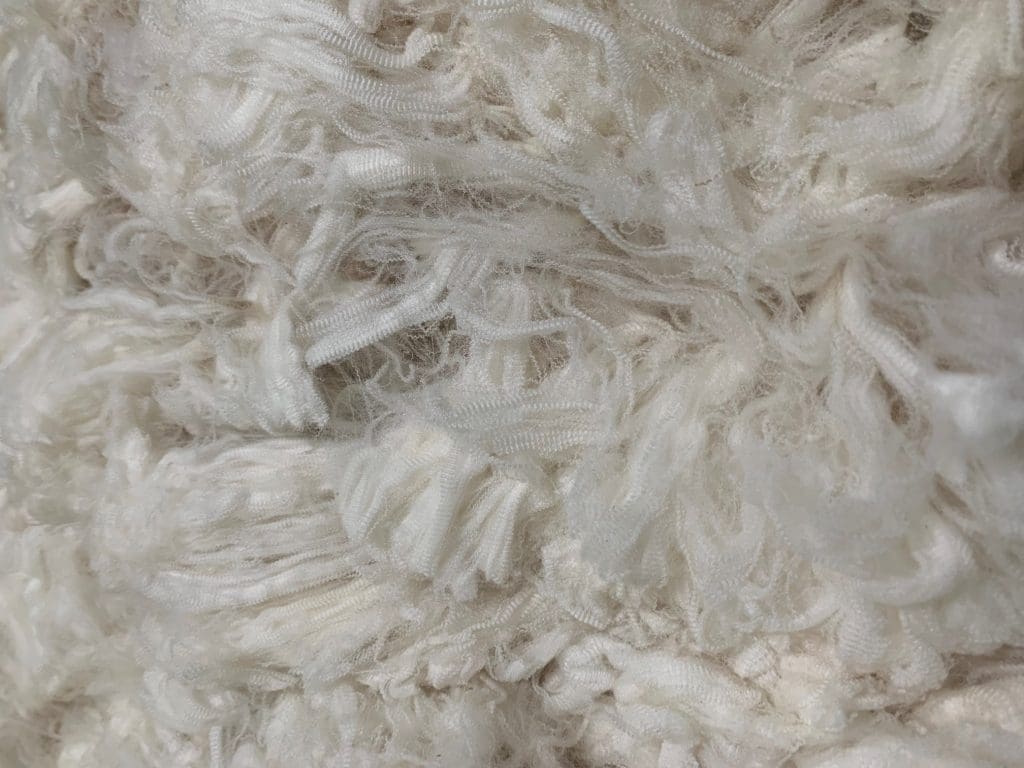
Merino wool prices rebounded 40-60 cents this week. Image – AWEX.
AUSTRALIAN wool prices rebounded 40-80 cents this week and pass-in rates more than halved as growers and brokers agreed to meet the higher market.
Australian Wool Innovation’s weekly market report said renewed buyer confidence and the 12 percent decline in national clip volumes was now assisting with price maintenance.
After losing 159 cents over the previous two weeks, the benchmark AWEX Eastern market Indicator rose 54 cents to 1887c/kg clean, with growers passing in 8.4 percent of the 28,273-bale offering, 4152 fewer than last week.
The EMI in $US also lifted US46 cents to US1307c/kg clean, as the $A-US exchange rate rose 0.48 cents to US69.25.
Price gains of up to 80c/kg clean per kg were commonplace for Merino fleece lines, with many individual lots with better specifications more than 100 cents dearer.
AWEX senior market analyst Lionel Plunkett said market turnaround was fuelled by much stronger buyer sentiment.
“The increase in confidence, resulted in an aggressive approach, as buyers fought hard to secure meaningful quantity of a relatively small selection.”
When compared to the corresponding sale of the previous season the national offering has fallen by 12.1pc or 215,689 bales, with only four sales remaining until the end of the season.
“The small offering combined with the strong demand, helped to push prices higher.
“In general terms, the increases were between 40 and 80 cents,” Mr Plunkett said.
“After recording the highest national passed in rate of the previous two seasons of 28.2pc in week 47, the price rises helped to reduce the passed in to 8.4pc for this series.”
Mr Plunkett said the skirtings followed the lead of the fleece recording increases, generally between 40 and 60 cents.
Crossbred prices also rebounded
Mr Plunkett said after the large losses experienced at the previous sale, the crossbred sector also managed to bounce back.
“The entire crossbred range generally rose by 40 to 60 cents.
“The main buyer focus was on the better prepared lines and these wools enjoyed the largest increases.”
Mr Plunkett said the oddments also recorded strong positive movement and locks in particular came under intense pressure as multiple exporters competed on a limited quantity, pushing prices up by 30 to 40 cents.
Buyer confidence buoyed by new business into China
The AWI weekly market report said the biggest change that came over the market was sentiment.
“Buyer confidence was buoyed by the writing of new business which was mainly into China, but smatterings of interest also appeared from across most of the global wool destinations.
“Exporters were said to be continuing their generally risk-adverse trading even in light of prices being put on the table that appeared “over the market”, which is rare indeed.”
AWI said the demand from overseas buyers remained on many occasions unfulfilled within the environment of swiftly rising auction prices.
“As is prone to happen in any market when such a rapid shift in prompt demand occurs within low supply availability, the sale results accentuated beyond where the business was initiated.
“The follow up business then becomes harder to come by and decision making on both sides of the trade are then erring always to the side of caution.”
AWI said the market movements of the past month though, probably signals the modus operandi of the industry at large presently.
“Rapid falls followed by immediate reactionary gains is generally indicative of supply winning over prompt demand.
“Demand for all wool types is still evident and is the key driver of wool price, but that demand has turned over the past 6 to 12 months to be being sporadic and softer than the peak demand seen in late 2017 and early 2018.”
AWI said the subsequent 10pc loss of the national clip is now assisting in the maintenance of price levels.
Since August last year when the EMI was 2116 cents, the trend has been of a softening market to an EMI of 1776 cents in November. The EMI then rallied up to 2027 cents in February 2019 and drifted down again to last week’s low of 1833 cents, AWI said.
“As a high percentage of our wool is traded under a $US influence, the market price holding up relatively well in $A locally can also be attributed to the $US during that period deteriorating from the August 2018 forex rate of US73 cents to US69 cents today.”
AWI said the auction buying was again dominated by trading export companies and ably assisted by some larger top makers.
“In what was a positive week for sellers, one slight negative was the relative inactivity once more of the larger Chinese indent operators who generally lead in setting the market.
“For the market to go up so strongly in the face of that weakness can be read as both positive and negative, but more selling weeks are required to see if a change in trend is underway.”
AWI said the high lamb prices of up hit A$11/kg, mutton near $8/kg and goat meat over $10/kg were significant for wool production, as these prices put pressure on wool growers to make alternative uses of their land.
With the national vale offering reducing to 23,619 next week, as Fremantle takes one-week recess and only Sydney and Melbourne selling, if the price rises do not bring more sellers to the market, this will be the smallest national offering in over two years, Mr Plunkett said.

After last week’s AWI-lashing Chick, commentary please.